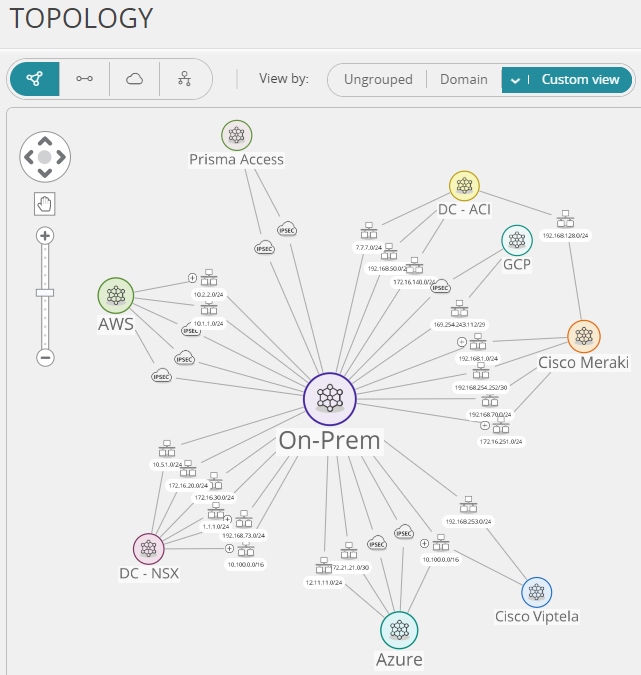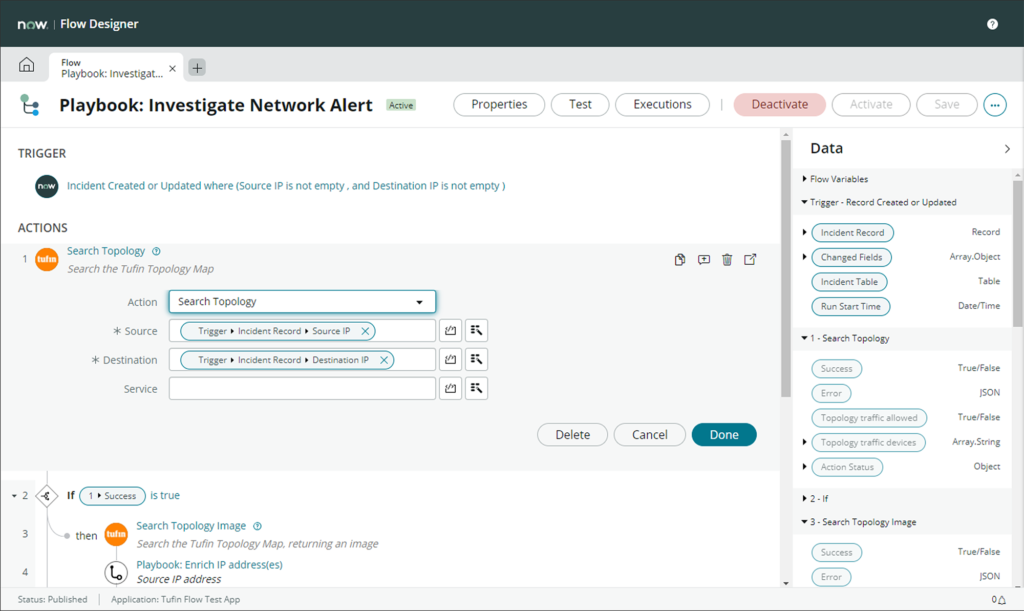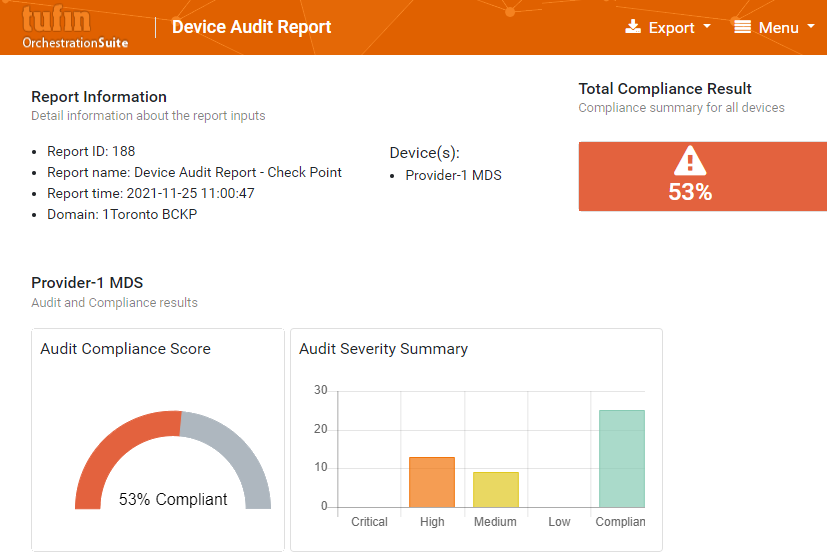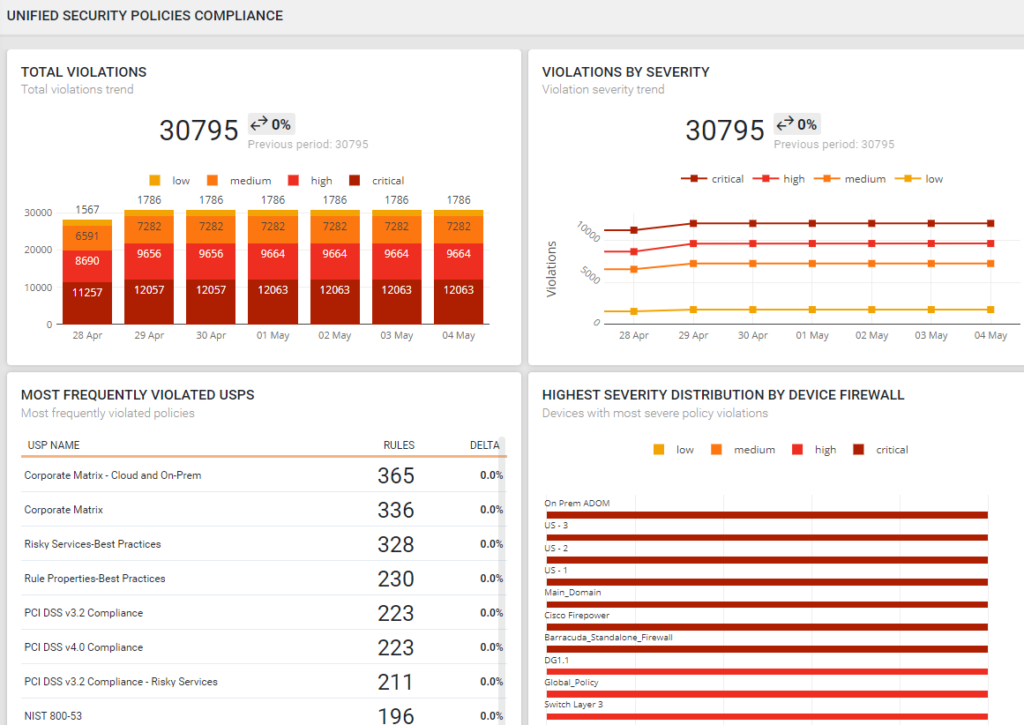
Centralized Firewall Management
Automate and streamline security management across your network from a central dashboard, ensuring real-time cybersecurity protection for endpoints. Manage network traffic effectively to comply with audits, reduce vulnerabilities, and defend against cyberattacks—all while meeting data protection regulations.
Centralized Firewall Management Use Cases

Centralized Hybrid-Cloud, Multi-Vendor Management
Enhance firewall security with precise configuration and efficient handling of complex changes, enabling network administrators to proactively troubleshoot and manage security zones across diverse devices.
- Leverage a unified platform with advanced management tools to optimize visibility, prioritize potential threats, and maintain a robust security posture.
- Orchestrate network and application connectivity using Tufin’s topology map, while integrating zero trust principles and security measures into firewall changes.
- Utilize templates and real-time notifications to streamline operations and ensure comprehensive network security.

Simplified Firewall Management
Integrate ticketing systems and ITSM platforms to automate workflows for next-generation firewalls (NGFWs), including rule tasks and cleanup processes. Efficiently track rule changes and history in firewall logs, while leveraging cloud-based solutions to enhance protection against cyber threats.
- Integrate ticketing systems and IT service management (ITSM) platforms to streamline the change management process.
- Automate firewall rule tasks, recertification, and cleanup processes to ensure efficient management of rule sets across various vendor technologies.
- Streamline change management processes across multiple teams by efficiently tracking rule changes and history, identifying and mitigating security policy violations, and adding exceptions as needed.

Firewall Audit Readiness
Automatically generate detailed, customizable compliance reports that document network firewall configurations and track all rule changes. This management solution enhances firewall performance, ensures proper access control, and supports mitigation efforts by providing comprehensive insights into compliance status.
- Ensure continuous firewall audit readiness and robust network governance, demonstrating immediate compliance proof without manual efforts.
- Generate comprehensive, customizable documentation and reports detailing firewall configurations, compliance status, and audit trails.
- Track all firewall rule changes, including who made the change, when it was made, and why.

Continuous Compliance Automation
Proactively identify firewall rule violations and exceptions before network changes, use a user-friendly interface to manage a unified security policy, and automate the assessment of firewall configurations against regulatory standards and internal policies.
- Drive accurate compliance and security policies through automation, proactively identifying violations and exceptions in firewall rules before implementing network changes.
- Utilize a user-friendly interface to develop and manage a unified security policy across your hybrid-cloud infrastructure.
- Automate the process of assessing firewall configurations against regulatory standards and internal policies, including predefined checks for common compliance frameworks such as PCI DSS, HIPAA, GDPR, and more.
Get Started with Tufin
Contact our experts to learn more about pricing, receive a free network and firewall risk assessment, or schedule a demo.
Firewall Management Resources
Articles
Solutions
Transforming Network Security & Automation
Elevate your network security and cloud security operations with Tufin’s product tiers. Addressing the most challenging use cases, from segmentation insights to enterprise-wide orchestration and automation, experience a holistic approach to network security policy management.
SecureTrack+
Firewall & Security Policy Management
Drive your security policy journey with SecureTrack+
- Centralize network security policy management, risk mitigation and compliance monitoring across firewalls, NGFWs, routers, switches, SDN and hybrid cloud
- Automate policy optimization
- Prioritize and mitigate vulnerabilities
SecureChange+
Network Security Change Automation
Enhance your visibility and automate mundane tasks with SecureChange+
- Achieve continuous compliance
- Reduce network change SLAs by up to 90% with network change design and rule lifecycle management
- Identify risky attack vectors and detect lateral movement
- Troubleshoot connectivity issues across the hybrid cloud
Enterprise
Zero-Trust Network Security at Scale
Fortify your network security operations with Enterprise
- Achieve zero-touch automation through provisioning of network access changes
- Deploy apps faster through application connectivity management
- Minimize downtime and data loss with High Availability and built-in redundancy
